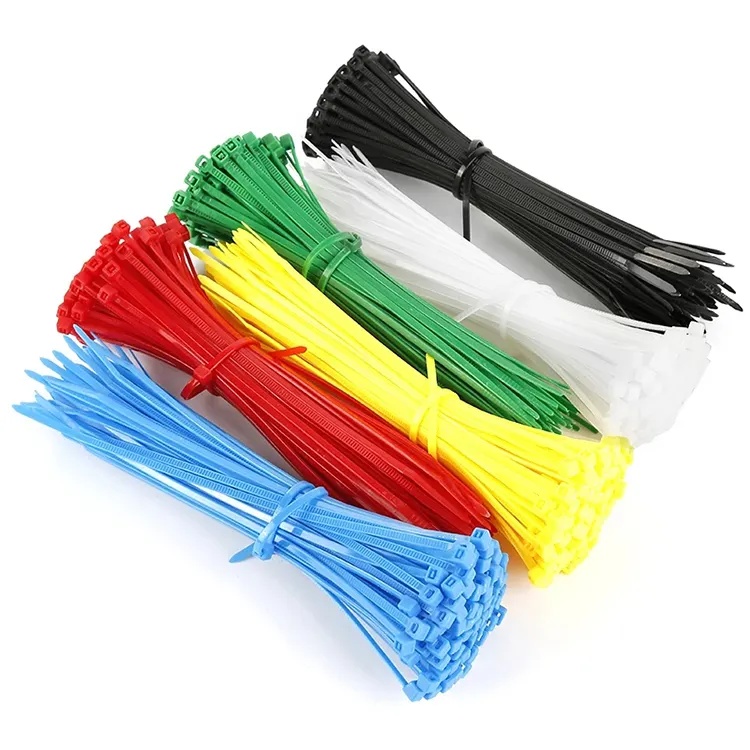YUEQING HUIHUA ELECTRONIC CO., LTD
Several Key Points on the Quality Inspection Standards for Nylon Cable Ties
1. Raw material quality inspection
Types and Purity of Nylon Raw Materials: The main raw material for nylon cable ties is polyamide (nylon). Before production, the purity of the raw materials must be tested to ensure they meet the specified standards. Low-quality or impure nylon can affect the strength, durability, and weather resistance of the cable ties.
Environmental requirements: Modern nylon cable ties also need to meet environmental standards, especially in terms of being biodegradable or free of harmful substances, to avoid causing pollution to the environment.
2. Tensile Strength Test
Tensile Strength: Tensile strength is one of the most important quality indicators for nylon cable ties. Through tensile testing, the load-bearing capacity of the ties during use can be evaluated. During the test, the ties are stretched to the breaking point under specified conditions (such as room temperature, humidity, UV exposure, etc.), and their maximum tensile force is measured.
Standard requirements: Generally, the tensile strength requirements for nylon cable ties vary depending on their specifications and applications, typically ranging from 8 to 200 kilograms. The specific value is determined by the product model.
3. Temperature Resistance Test
High-Temperature Test: Nylon cable ties need to maintain their shape and performance at high temperatures. The test is usually conducted in an environment of 65℃ to 85℃, observing whether the ties will deform, loosen, crack, or other issues during the test.
Low-Temperature Testing: Low-temperature testing can simulate the performance of cable ties in cold environments. The test temperature is generally set between -40°C and -20°C to check whether the cable ties become brittle, break, or lose elasticity under low-temperature conditions.
4. UV Resistance Performance Test
UV aging: Prolonged exposure to ultraviolet light can cause nylon materials to degrade and become brittle. When nylon ties are used outdoors or in sunlight-exposed environments, they must undergo UV resistance testing. The testing method typically involves exposing the ties to simulated UV lamps and testing their UV resistance over a specific period to ensure they do not fade or break quickly.
Aging test: Accelerated aging test using ultraviolet light to simulate the performance changes of nylon cable ties after long-term outdoor exposure.
5. Chemical Resistance Test
Chemical Resistance: For cable ties used in chemical environments (such as factories or laboratories), their chemical resistance is also an important indicator. Nylon cable ties need to undergo a series of chemical contact tests to evaluate their corrosion and aging under substances like oil, solvents, and acids and bases.
6. Fire resistance performance test
Flame resistance: For certain special applications, nylon cable ties need to have a certain level of flame resistance. During testing, the nylon cable ties need to be held under a flame source for a certain period of time to observe whether they are easily ignited or whether they can extinguish quickly.
Standard requirements: Generally, flame retardant performance must meet international certification standards such as UL94, particularly the more stringent UL94-V2 and UL94-V0 standards.
7. Size and appearance inspection
Dimensional accuracy: The dimensional accuracy of nylon cable ties directly affects their performance. During quality inspection, it is necessary to ensure that the width, thickness, and length of the ties meet the design specifications and that the deviations are within the allowable range.
Visual inspection: Check the nylon cable ties for defects such as cracks, bubbles, color differences, and uneven material to ensure they have a clean appearance and meet quality standards.
8. Pull-off resistance
Tightness and fixation: Test whether the nylon cable tie can effectively secure when tightened, check if the connection between the head and tail of the tie is stable, and whether there is any loosening. The quality of the pull-out resistance determines the reliability of the cable tie in actual use.
9. Environmental Adaptability Test
Humidity Test: Nylon cable ties tend to absorb water and swell in humid environments, affecting their performance, especially tensile strength. The humidity test involves exposing the cable ties to a high-humidity environment and observing changes in their physical properties, such as size changes and strength reduction.
10. Abrasion resistance test
Wear durability: For certain cable ties that need to be used for extended periods (such as applications on automated production lines), their wear resistance is also an important indicator. Through repeated friction tests, the durability of the cable ties under friction conditions is evaluated.
Conclusion
The quality inspection standards for nylon cable ties include but are not limited to the aforementioned content, ensuring their stable and reliable performance in different application scenarios. Strictly adhering to these standards for testing, our company has a CANS-standard laboratory that can conduct various tests mentioned above to ensure our product quality. If you have any needs, please feel free to consult us!!!

Copyright © 2025 YUEQING HUIHUA ELECTRONIC CO., LTD | All Rights Reserved
Hello, please leave your name and email here before chat online so that we won't miss your message and contact you smoothly.